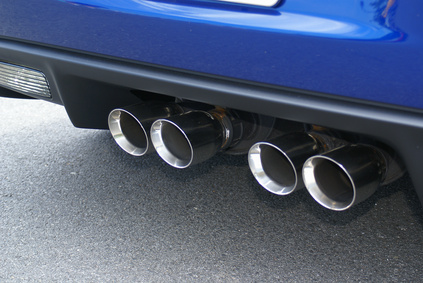
Exhaust gas recirculation (EGR) valves send a portion of exhaust vapors back to the engine to modify combustion. This controls the temperature of combustion and reduces the production of harmful nitrogen compounds in vehicle emissions. Properly monitored and implemented EGR systems can actually improve engine performance, gas mileage and vehicle emissions while reducing ping.
EGR valves appeared on some General Motors cars in 1973, and they were widely implemented on other makes and models during the 1970s. Their use continues today. Early EGR valves operated with vacuum switches and were often unreliable. Cars now use onboard computers to make EGR valves more efficient by monitoring temperature, oxygen and vehicle speed.
The exhaust gases help cool the temperature of combustion and prevent the formation of various nitrogen oxides. Nitrogen oxides are harmful to the environment and are considered "greenhouse" gases. Adding exhaust gases into the intake causes combustion in the cylinders to occur more slowly, and the peak temperature is lower. This causes fewer nitrogen oxides to be formed and leads to cleaner vehicle emissions.
Nitrogen oxide emissions can be controlled by different strategies. Enriching the fuel mixture will reduce emissions of nitrogen oxides, but it will increase hydrocarbon and carbon monoxide emissions. You can also slow down the engine timing to reduce the compression ratio of a piston engine, but this reduces engine power and fuel efficiency. The third option is to recirculate exhaust gases into the engine intake. This is what an EGR valve is for.
EGR valves operate through control of an onboard computer. The computer evaluates information from a variety of sensors to adjust the amount of exhaust gases that are allowed into the intake. Monitors provide information on manifold absolute pressure, engine temperature, and engine rpm. The EGR valve is usually closed for cold starts or ambient temperatures below 20 degrees Fahrenheit or when the engine coolant temperature is less than a certain level, depending on the make and model of the car.
Nitrogen oxides consist of many different compounds consisting of nitrogen and oxygen. They are jointly referred to as "NOx" compounds. They contribute to ground level smog and ozone pollution. Different types of vegetation are damaged by ozone pollution. NOx compounds can be converted in the atmosphere into nitrate particles that are detrimental to respiratory function and can damage lungs. Nitrates also can acidify the environment, contributing to acid rain and the degradation of the environment. EGR valves on vehicles help to reduce NOx emissions and maintain a healthier environment.
